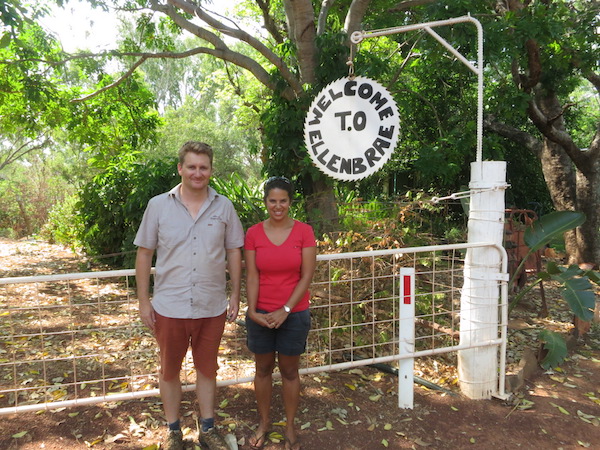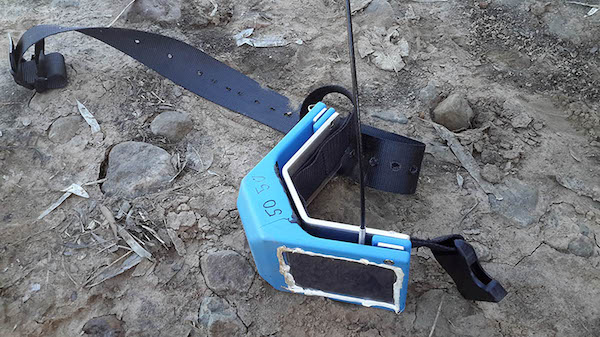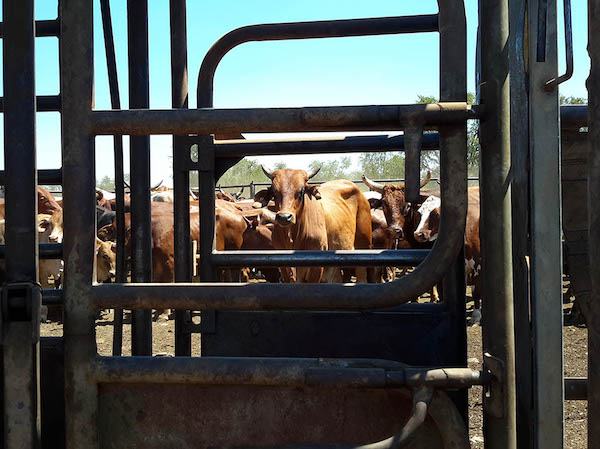Cattle 1: Technology 0
Host: Rangelands NRM
Written by Kira Andrews – Evaluation and Project Manager, Rangelands NRM.
I have had the pleasure of visiting a few stations across Western Australia to look at opportunities to support land management projects. I would often marvel at how hard everyone worked but I would always think – “This seems so hard, surely there is a gadget out there that could make things easier?” Of course, these ‘gadgets’ are few and far between. Mostly innovations and new information involve significant exasperation, hair pulling, and time investment.
 Kira and her colleague Grey.
Kira and her colleague Grey.
To give an example, one of the key issues facing land managers in Northern Australia is hot, late season wildfires. They tear through vast areas burning up valuable fodder and habitat, leaving a devastated landscape in its wake. Pastoralists, ranger groups, and conservation organisations have all been trying to address the issue in their own ways, by implementing a mosaic of fire breaks, but choosing location of the burn sites based on their individual priorities. Those of us on the outside would listen and note the similarity of each group’s concern, but how it was expressed in very different ways.
As a way of trying to show how much common ground there is in successful fire mitigation practices for conservation or fodder protection, Rangelands NRM successfully applied to the National Landcare Programme to fund an innovative project that would demonstrate the productive benefits of implementing early season prescribed burning on a productive cattle station. Partnering with the Australian Wildlife Conservancy (AWC) and CSIRO, the project aimed to install GPS collars on cattle freely grazing in areas where EcoFire (a mosaic of early prescribed burns) would be implemented and then analyse what happened to the vegetation before, during, and after the fire.
Sounds fairly straight forward right? Wrong.
 I reckon she knows how fetching she looks in her brand new necklace.
I reckon she knows how fetching she looks in her brand new necklace.
By far the easiest parts of the project were when we were working with the pastoralists and AWC on tasks that came naturally. Even designing and implementing the prescribed burn plan was a relative breeze because we were able to rely on people’s excellent knowledge of the animals and landscape and ability to read and make adjustments on the spot. But getting the new technology (GPS cattle collars) to work proved to be a testament to endurance and lateral thinking.
It seemed that everything that could go wrong with the technology did. The list of problems to fix felt endless: from tough solar power cells that had so many layers of protection that they weren’t actually able to capture the sun’s rays, to transmission stations that worked only after the second complete replacement of all electrical components – but only if the cattle stood still for 10 hours within 10 metres of the unit! Especially disheartening was our first field trial, where 80 per cent of the units failed within 24 hours and 90 per cent within 28 hours – none survived the week.
Despite the technological setbacks, our team persevered and eventually managed to install nearly 50 GPS collars on cattle that were scattered across two pastoral leases before we commenced the 2015 early season burns. Even more impressive, nearly all the collars were collected and most had managed to collect some data. AWC is still analysing the data but have already noticed some rather interesting results. It is important to note that our findings correspond with established rules of thumb that are – cattle are reluctant to move far away from known water points and its best to allow wet season spelling of burnt areas.
 The GPS collar, the source of much angst.
The GPS collar, the source of much angst.
Some of our preliminary findings suggest that cattle are reluctant to move more than 2km from a known water point – even if there is green pick available elsewhere. Another interesting finding is that the green pick is most attractive when it is 2-8 weeks old. So when it is impossible to follow best practice, at the least one should not burn within 2km of a water point and keep cattle off the burn area for at least two months. The saddest part is that the cattle already knew all this, we are still just catching up.
 Don’t worry we were being closely monitored the whole time!
Don’t worry we were being closely monitored the whole time!
